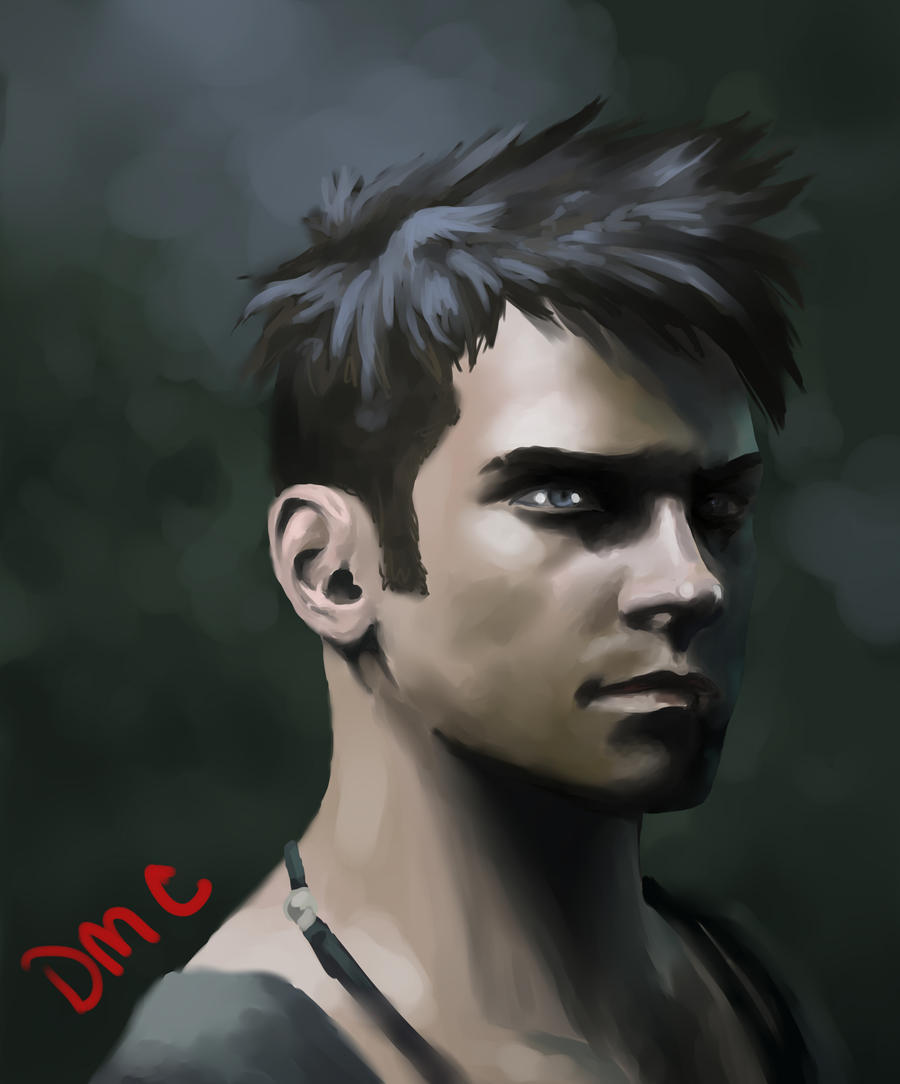http://www.gamefaqs.com/ps2/920607-devil-may-cry-3-dantes-awakening/faqs/40790I'm always hearing about how the enemy DT mechanic in DMC3 was so obtuse that it took the combined efforts of the community a dog's age to figure out how it worked. Is there like... a summation of how it works somewhere and what was so difficult to figure out?
^^ Yes that is indeed my FAQ. It's of course outdated now but a lot of stuff in it is still valid for when Vanilla came out.
Devil Triggered: A special ability of ALL the enemies in the game that only
occures in Dante Must Die mode. This is a transformation that was carried
over from DMC1 and makes a nasty appearance in DMC3. It follows the same
format as scared tactics, only in DMD mode enemies DT instead of being
scared! DT completely changes the physics of the combat system, especially
for juggleable enemies, increases attack cycles, increases useable of
advance manuevers, increases stamina, increases strength and just in general
make the enemy much tougher to defeat. The statures in DMD follow a "every 1
out of 6-8 hits" during a progressive style increase. What it means is that
you can launch an enemy only after hitting it 6-8 times until it goes into a
standard hit stun allowing you an opening to launch/knockback etc. No bosses
except Vergil can DT, and he has different requirements for DTing.
9) DT Enemy Rising Mechanics
For a time there has been some debate as to how exactly DTed enemies are
juggledin DMC3. In DMC1, it was a lot simpler where you just DTed to match
the enemies DT and the properties would for the most part return to normal.
In DMC3, it's a lot different. DTing has no extra effect on property against
DTed enemies. Enemies after they have DTed generally don't get phased by
attacks or follow any of the properties discussed before (knock back,
launched, knock down, or even minor stuns).
This resulted in general frustration and confusion when enemies that were
"punching bags" before just walked through most of the attacks that the player
threw at it. This proved to be a problem against the regular enemies that you
would disable just by juggling them in the air for absurd combos, and since
this is not an option now you have to rely more on endurance than actual skill.
This was the thought at first HOWEVER there was actually a mechanic
implemented for players that actually used some critical analysis.
Fact is that enemies CAN be juggled/knocked back while they are DTed, but
the method to go about it is a bit awkward at first. Most players knew this but
were unfamiliar with how it exactly worked and I am here to break down the
specifics. It requires a bit of intuition and awareness to get this to work but
once you pay attention it's not that hard.
First I need to make clear a definition so that things are easier to understand:
*Stunt attacks*: I will refer to this as an attack that can knock down, stun,
knockback OR rise un DT'd enemies at any time.
Examples-
Devil Arms:
Rebellion's stunt attacks: Stinger/High Time/Drive/Helm Breaker/final hit of
Aerial Rave/Sword Pierce/Final hit of crazy dance/Prop Shredder.
Cerberus' stunt attacks: Final hit of Revolver/Final hit of combo I/Crystal/
Million carats.
A&R stunt attacks: Final hit of combo I/final hit of Million Slash/Aerial
Cross/Final hit of Jet Stream lv3/Crossed Swords/Final hit of Sky Dance.
Beowulf's stunt attacks: Final hit of combo I & II/Straight/Beast Uppercut/
Rising dragon/Final hit of Hyper Fist/Hammer/Zodiac/Volcano.
Nevan's stunt attacks: Reberb shock/Crazy roll/Distortion/Bat Rift.
Guns:
E&I: Final hit of wild stomp.
Shotgun: Normal & Charged shots/Fireworks/Gunstinger/Point blank
Artemis: Sphere
Spiral: Normal shot/Sniper.
*Kalinna Ann*: This is one of the special cases. Normal shots can knock
down DT'd enemies with less hits. This is a SPECIAL attribute of the Gun.
Rising DT'd enemies system (Hell type enemies):
This mainly consists of the number of stunt hits that you need to inflict
onto the DT'd enemies to prepare them for rising or knocking them back, each
rise-able enemy in the game has different number of stunt attacks that you
have to inflict so you can rise them with the final hit.
I'll explain the rise-able Hell type enemies.
Note that if you knock down the DT'd enemy, its stunt cycle will reset. Also
some enemies like Abyss reset their stunt cicle when they teleport to attack.
(this is a special property of Abyss).
Hell Pride: Standing: 1 Stunt attack, Rise.
Knocked down on the floor: 1 Stunt attack, Rise.
Hell Lust: Standing: 2 Stunt attacks, Rise.
Knocked down on the floor: 2 Stunt attacks, Rise.
Hell Gluttony: Standing: 3 Stunt attacks, Rise.
Knocked down on the floor: 2 Stunt attacks, Rise.
Hell Sloth: 4 Stunt attacks, Rise.
Knocked down on the floor: 2 Stunt attacks, Rise.
Abyss: Standing: 3 Stunt attacks, Rise.
Knocked down on the floor: 2 Stunt attacks, Rise.
So basically what this means is that in order to rise a Hell Sloth that is
standing, you need to first hit it with 4 stunt attacks which will temporarily
disable its defenses and the next hit (ifa stunt attack) will pull off.
Meaning if you do something like:
Rebellion: /\ x3, Pop Shredder, Hightime (short), Stinger, Hightime (any)
Then the last Hightime will cause the Hell Soth to rise up. Or if you replace
the last Hightime withStinger, the Hell Sloth will be knocked back normally.
NOTE: NOT ALL STUNT ATTAKS HAVE THE SAME POWER, MEANING SOME ENEMIES WITH
HIGHER DEFENSE LIKE HELL SLOTHS MAY NEED MORE THAN ONE OF THAT STUNT ATTACK
EXAMPLE: Stinger works for lesser hell type enemies, but it isn't as effective
as Straight for Hell Sloths.
Knowledge of these mechanics is crucial for stylish SS rank play. If you plan
to combo DTed enemies, then you need to know this like the back of your hand.
There is a lot more to cover on this but this is the basics of it and should
get you going.
I plan to release one for the other enemies as well, but outside of Arachnes
there really is no need. Arachnes follow a similar mechanic even when they
are unDTed.
TL;DR version: DT enemies have a certain "stunt" value on them and you have to overcome these stunt values by special moves like Stinger multiple times. Once you know that their stunt value has been overridden your next stunt move will act like it does if they weren't in DT mode (Hightime will rise, Stinger will knock back etc). The value for stunt on enemies varies from enemy to enemy and not only only that but the stunt value varies from move to move as well. And to make things more complexed, their stunt value differs depending upon their state during the fight meaning they have a lowered stunt value if either knocked down, juggled or wall bounced. Something like Real Impact has extremely high Stunt value for example as does a move like Judgment Cut of Vergil's making those moves extremely powerful in DMD mode if you land them.
At the time of the FAQ's creation we only documented on a few enemies and moves to check the system. It was put in there so people would have an idea of how the system works and would just figure out basic stunt values for enemies by themselves.







